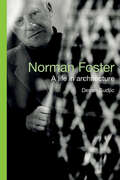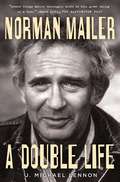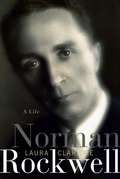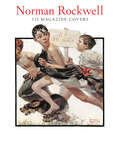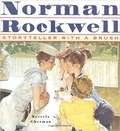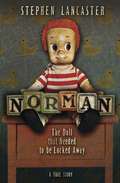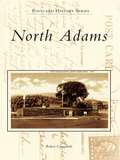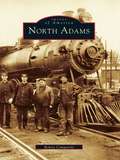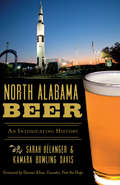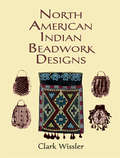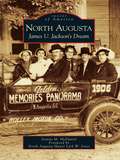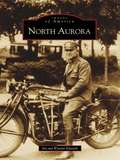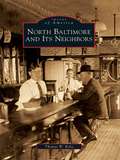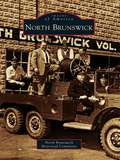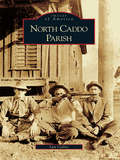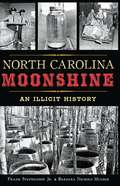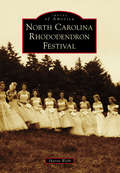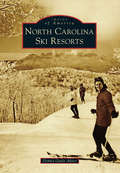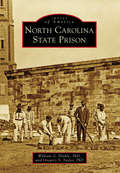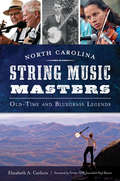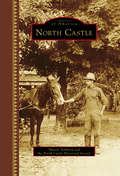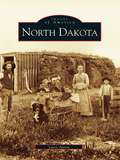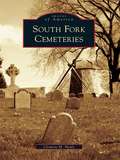- Table View
- List View
Norman Foster: A Life in Architecture
by Deyan SudjicThe author of The Language of Things “takes readers on an engrossing tour of Foster’s life” from childhood to the world-renowned buildings he designed (Publishers Weekly, starred review).A leading pioneer of high-tech architecture, Norman Foster has worked across the globe, collaborating with luminaries such as R. Buckminster Fuller to Steve Jobs. Born in Manchester, England, Foster grew up in poverty, the son of a machine painter. He served in the Royal Air Force and worked in a local architect’s office before returning to school for architecture. Foster went on to design the Reichstag, the Hong Kong and Shanghai Banks headquarters in London and China, the new Wembley stadium and the British Museum's new court. He is also responsible for the design of Beijing's new airport, the Rossiya tower in Moscow, one of the towers at Ground Zero in Manhattan, as well as numerous other buildings around the world. In this insightful biography, Deyan Sudjic charts Foster’s remarkable life and career.
Norman Mailer: A Double Life
by J. Michael LennonFrom the biographer who knew Norman Mailer for decades comes the definitive, authorized portrait of the eminent novelist, journalist, and controversial public figure, based on extensive interviews and unpublished letters.Norman Mailer was the one of the most famous writers of his generation, a figure as notorious for his stormy romances and quarrels with other writers as he was respected for his numerous bestsellers and literary accolades. In this candid biography, J. Michael Lennon brings a wealth of research informed by his years of personal acquaintance with Mailer, as well as the cooperation of Mailer's family, to reveal the life and work of an American legend. In a career that produced eleven bestsellers, Mailer lived through every great postwar event of the twentieth century and commented on many of them. From his initial success with his World War II novel The Naked and the Dead, through his observations on the convulsive 1960s in the Pulitzer Prize-winning Armies of the Night, to his own quixotic run for mayor of New York City, his life was a reflection of the turbulent times in which he lived. A man of sharp complexities, he was loved and loathed, the most prominent public intellectual of his time, at once an outspoken critic of the Vietnam War and the bête noir of the women's rights movement. Lennon explores Mailer's dualities: journalist and activist, devoted family man (he was married six times and was the father of nine children) and notorious philanderer, intellectual and fighter, writer and public figure, all of them evolving through Mailer's self-conscious effort to create a distinctive identity for himself. Capturing this protean life as never before, Norman Mailer: A Double Life gives us the man in full--a remarkable and unique figure, a giant in the context of his time.
Norman Rockwell
by Laura ClaridgeNorman Rockwell’s tremendously successful, prolific career as a painter and illustrator has rendered him a twentieth-century American icon. However, the very popularity and accessibility of his idealized, nostalgic depictions of middleclass life have caused him to be considered not a serious artist but a “mere illustrator”–a disparagement only reinforced by the hundreds of memorable covers he drew for The Sunday Evening Post. Symptomatic of critics’ neglect is the fact that Rockwell has never before been the subject of a serious critical biography. Based on private family archives and interviews and publishes to coincide with a major two-year travelling retrospective of his work, this book reveals for the first time the driven workaholic who had three complicated marriages and was a distant father —so different from the loving, all-American-dad image widely held to this day. Critically acclaimed author Laura Claridge also breaks new ground with her reappraisal of Rockwell’s art, arguing that despite his popular sentimental style, his artistry was masterful, complex, and far more manipulative than people realize.
Norman Rockwell 332 Magazine Covers: 332 Magazine Covers (Tiny Folio Ser.)
by Christopher FinchNow available for the first time as an e-book, Norman Rockwell 332 Magazine Covers features Rockwell's unique vision of America. All of his his justly famous cover illustrations for the Saturday Evening Post, painted between 1916 and 1963, are reproduced in splendid full color in a digital format, with commentaries by Christopher Finch, the noted writer on art and popular culture.There are few more satisfying sights on a city street than a well-stocked newsstand, hung with a hundred or more magazines and periodicals, each competing for the attention of the potential customer. The American magazine cover enjoyed a Golden Age during the period that opened with the high-speed color press, and ended when subscription sales grew to paramount importance. Dozens of gifted artists made their reputations in this field. None of them, however, achieved the immense and sustained popular success enjoyed by Norman Rockwell.Although technically he was an academic painter, he had the eye of a photographer and, as he became a mature artist, he used this eye to give us a picture of America that was familiar-astonishingly so-and at the same time unique. The picture seemed familiar because it was everyone's dream of America; it was unique because only Rockwell managed to bring it to life with such authority. Rockwell held up a friendly mirror to the society he lived in, and Americans have looked into this glass and seen themselves as warm, decent, hard-working citizens of a country bountiful enough to accommodate their boundless optimism.
Norman Rockwell: Storyteller with a Brush
by Beverly Gherman Family Trust RockwellHe was a pale, skinny boy with thick glasses, but Norman Perceval Rockwell knew that he could draw. Beverly Gherman shows us how this awkward boy grew up to become a famous illustrator. As a boy, he sketched the characters from Charles Dickens's novels at the kitchen table. And although his mother discouraged him from pursuing a career in art, Norman knew early on that he could not ignore his talent. He dropped out of school at age fourteen to study art and begin the career that would eventually capture the heart of his entire nation. The experiences of Rockwell's life became part of his paintings: a childhood trip to the country, his son's departure for the Air Force, the fire that destroyed his studio. He also depicted world events and people of his time: Charles Lindbergh's flight across the Atlantic Ocean, the soldiers of World War II, and the children involved in school integration, as well as more intimate American scenes, such as a family dinner or a trip to the doctor's office. Beverly Gherman paints a colorful and engaging portrait of Norman Rockwell's life, enhanced by full-color reproductions of the artist's own paintings, which tell both his story and their own.
Norman: The Doll That Needed to Be Locked Away (A True Story)
by Stephen LancasterNorman takes you on a chilling journey into Stephen's life with a doll that has held the spirit of an unborn child for over fifty years--a haunted doll that still lives in Stephen's house.
Normporn: Queer Viewers and the TV That Soothes Us (Postmillennial Pop #38)
by Karen TongsonAn irreverent look at the love-hate relationship between queer viewers and mainstream family TV shows like Gilmore Girls and This Is Us After personal loss, political upheaval, and the devastation of the COVID-19 pandemic, many of us craved a return to business as usual, the mundane, the middlebrow. We turned to TV to find these things. For nearly forty years, network television has produced a constant stream of “cry-along” sentimental-realist dramedies designed to appeal to liberal, heterosexual, white America. But what makes us keep watching, even though these TV series inevitably fail to reflect who we are?Revisiting soothing network dramedies like Parenthood,Gilmore Girls, This Is Us, and their late-80s precursor, thirtysomething, Normporn mines the nuanced pleasures and attraction-repulsion queer viewers experience watching liberal family-centric shows. Karen Tongson reflects on how queer cultural observers work through repeated declarations of a “new normal” and flash lifestyle trends like “normcore,” even as the absurdity, aberrance, and violence of our culture intensifies. Normporn allows us to process how the intimate traumas of everyday life depicted on certain TV shows—of love, life, death, and loss—are linked to the collective and historical traumas of their contemporary moments, from financial recessions and political crises to the pandemic.Normporn asks, what are queers to do—what is anyone to do, really—when we are forced to confront the fact of our own normalcy, and our own privilege, inherited or attained? The fantasies, the utopian impulses, and (paradoxically) the unreality of sentimental realist TV drama creates a productive tension that queer spectators in particular take pleasure in, even as—or precisely because—it lulls us into a sense of boredom and stability that we never thought we could want or have. .
North Adams
by Robert CampanileThe history of North Adams is a portrait of survival and a celebration of diversity, which is not only expressed in its citizens and their ancestry but also in the many faces that the city and its environment have taken on through the years. From the isolated military outpost that fought a dramatic battle in the mid-1700s, through the roller-coaster ride of prosperity and economic depression endured by its citizens, North Adams exemplifies the strength that is a trademark of New England. North Adams contains an unusual collection of rare photographs that celebrate every aspect of the city. The book exemplifies how the population is a mosaic of cultures that sought a better life and wove an atmosphere of acceptance and sharing. An important part of that better life included the industry that made indelible imprints on the nation's history by producing pig iron for the Civil War's famous Monitor ironclad, by the engineering feat of the Hoosac Tunnel, and by leading the nation in the manufacture of fabrics, shoes, and electric capacitors. The diverse architecture that dominates hillside church steeples, the long gone Victorian depot station, the devastating floods, the majestic hot-air balloons, and the everyday faces of citizens are all captured here in striking photographs. Together they create the story of a city that always found a way to survive.
North Adams (Images of America)
by Robert CampanileThe history of North Adams is a portrait of survival and a celebration of diversity.This celebration is not only expressed in its citizens and their ancestry but also in the many faces that the city and its environment have taken on through the years. From the isolated military outpost that fought a dramatic battle in the mid-1700s, through the roller-coaster ride of prosperity and economic depression endured by its citizens, North Adams exemplifies the strength that is a trademark of New England. North Adams contains an unusual collection of rare photographs that celebrate every aspect of the city. The book exemplifies how the population is a mosaic of cultures that sought a better life and wove an atmosphere of acceptance and sharing. An important part of that better life included the industry that made indelible imprints on the nation's history by producing pig iron for the Civil War's famous Monitor ironclad, by the engineering feat of the Hoosac Tunnel, and by leading the nation in the manufacture of fabrics, shoes, and electric capacitors. The diverse architecture that dominates hillside church steeples, the long gone Victorian depot station, the devastating floods, the majestic hot-air balloons, and the everyday faces of citizens are all captured here in striking photographs. Together they create the story of a city that always found a way to survive.
North Alabama Beer: An Intoxicating History (American Palate)
by Danner Kline Hops Kamara Bowling Davis Sarah BélangerNorth Alabama built its fi rst commercial brewery in Huntsville in 1819, three months before the state joined the Union. Before Prohibition in 1915, the region was peppered with numerous saloons, taverns and dance halls. Locals still found ways to get their booze during Prohibition using Tennessee River steamboats and secret tunnels for smuggling. Alabama re-legalized beer in 1937, but it wasn't until 2004, when the grass-roots organization Free the Hops took on the state's harsh beer laws, that the craft beer scene really began to flourish. Authors Sarah Bélanger and Kamara Bowling Davis trace the history of beer in North Alabama from the early saloon days to the craft beer explosion.
North American Indian Beadwork Designs
by Clark WisslerThis concise volume documents a fascinating and unique art form -- Native American beadwork. Including examples of handiwork from Eastern woodlands and Plains Indians, the author offers a clear, illuminating discussion of the origins, execution, and symbolism of Indian beadwork used to ornament belts, garters, pouches, and much more. Over 300 figures.
North American Indian Beadwork Patterns (Dover Crafts: Bead Work)
by Pamela Stanley-MillnerIn these pages you'll find 73 charts for bead weaving and 12 full-page patterns for bead appliqué — all taken from authentic craftwork of the Cheyenne, Sioux, Crow, Sauk & Fox, Winnebago, Kickapoo, Cree, Arapaho, and other Native American groups. Complete instructions are provided along with color keys for every chart and pattern.Use the charts to weave belts, headbands, sashes, necklaces, and other eye-catching accessories. You'll find the appliqué patterns are perfect for decorating leather, denim, and other fabrics. It's a great way to embellish handbags, vests, blouses, and other apparel and personal items. By following the clear step-by-step instructions in this book, even beginners can create a host of attractive beadwork projects with authentic Native American flavor.
North Augusta: James U. Jackson's Dream
by Jeanne M. Mcdaniel North Augusta JonesThe story of James U. Jackson and the history of North Augusta are inseparable. In the 1800s, James U. Jackson was one of the youngest railroad officials in the country. As a boy, he dreamed of developing the area on the bluffs across the Savannah River from Augusta, Georgia. That dream became a reality in 1906, when the community of North Augusta was incorporated. Not only a man of vision, Jackson's energy, drive, and personality enabled him to secure financial backing from several cities for his business ventures. His interurban railway, one of the first in the South, contributed to the development of the area's resort hotel industry, which catered to many people from the North during the winter months. Today, North Augusta's riverfront development continues, distinguishing it as a strong and independent community. James U. Jackson's dream continues to prosper.
North Aurora: 1834-1940 (Images of America)
by Jim Edwards Wynette EdwardsNorth Aurora: 1834-1940 is a quintessential study of what happened when settlers arrived in the Midwest in the 1830s. The village's location on the Fox River provided plentiful trees and waterpower for sawmills. Soon other mills, smelting works, a packing plant, a door-sash-blind factory, and a creamery all came to town. The village's railroad enabled its Boswell Cheese Factory to ship cream cheese to England in 1877. By 1922, North Aurora had a huge entertainment complex, a popular racetrack, and a hotel. Today the village is growing rapidly but still maintains its rural atmosphere.
North Baltimore and Its Neighbors
by Thomas W. BoltzLocated 25 miles south of Toledo, North Baltimore and its neighboring communities have seen dramatic changes since being settled in the 1830s. Pioneers labored to establish small farms and villages in the midst of what was then the Black Swamp, gradually achieving modest but precarious success. Then, in the 1880s, oil was discovered. The area flourished, attracting speculators, turning farmers into millionaires, and transforming quiet villages into rough-and-tumble boomtowns. It was a colorful period that also brought large homes, imposing commercial buildings, and grand town halls. However, by 1915, the oil field was depleted, and North Baltimore and its neighbors returned to their existence as quiet towns. Since then, many of the beautiful old buildings have disappeared, obscuring evidence of the area's dynamic history. With over 200 pictures, many from private collections, North Baltimore and Its Neighbors helps ensure that this history will not be forgotten.
North Brunswick
by North Brunswick Historical CommitteeNorth Brunswick, a large town spread over 12 square miles, has a rich history extending back to the early 1600s, when its only occupants were members of the Lenni-Lenape tribe. Some of the earliest establishments included the Black Horse Tavern building, which in 1670 was a stagecoach stop, and the Lion Tavern. By 1750, a gristmill operated near where a dam is currently located on Farrington Lake and was later joined by a snuff mill and tannery. From 1775 through 1900, the area was almost entirely agricultural. The first church, the Georges Road Baptist Church, was erected in 1847, and the first school committee was elected in 1829. By the dawn of the 20th century, North Brunswick began to come into its own, projecting the image of the thriving community it is today.
North Caddo Parish (Images of America)
by Sam CollierIn 1835, the United States purchased close to one million acres of land from the Caddo Confederacy of Native Americans; the Louisiana portion became known as Caddo Parish. The Indian agency's protection of that land delayed the settlement of the parishfor 25 years or more after it began in other parts of Louisiana, Texas, and Arkansas. The Red River logjam that existed for a few hundred years backed up bayous, which in return created navigable streamsand lakes. The uplands contained massive stands of virgin timbers and bountiful fruit, berries, fish, and game. The first land patents were sold in 1841, and by 1850, the area was known as Caddo Prairie. For a majority of the next 100 years, steamboat traffic, homesteaders, plantations, subsistence farmers, logging operations, entrepreneurs, and a building boom brought on by the railroad and oil industries uniquely melded to define local, cultural history. Today three towns and five villages are located in north Caddo Parish, while the memories of 10 historic communities remain strong.
North Carolina Moonshine: An Illicit History
by Barbara Nichols Mulder Frank Stephenson Jr.North Carolina holds a special place in the history of moonshine. For more than three centuries, the illicit home-brew was a way of life. NASCAR emerged from the illegal moonshine trade as drivers such as Junior Johnson, accustomed to running from the law, moved to the racetrack. A host of colorful characters populated the state’s bootlegging arena, like Marvin “Popcorn” Sutton, known as the Paul Bunyan of moonshine, and Alvin Sawyer, considered the moonshine king of the Great Dismal Swamp. Some law enforcement played a constant cat-and-mouse game to shut down illegal stills, while some just looked the other way. Authors Frank Stephenson and Barbara Mulder reveal the gritty history of moonshine in the Tar Heel State.
North Carolina Rhododendron Festival (Images of America)
by Sharon WebbDeep in the heart of the southern Appalachian Mountains lies Roan Mountain, the second-highest peak east of the Mississippi and home to one of the most breathtaking, naturally recurring phenomenon in the world: 600 acres of Catawba rhododendron that bloom each year in mid-June. In an effort to promote tourism and draw attention to this area, North Carolina and Tennessee joined together to form the Rhododendron Festival in 1946. As attendance increased, it soon became necessary for each state to hold a separate festival, and in 1952, the first North Carolina Rhododendron Festival took place. Since then, Bakersville, a village nestled at the base of Roan Mountain, has hosted the North Carolina Rhododendron Festival. Visitors and locals gather to pay homage to one of nature's most magnificent wonders. After nearly seven decades, the festival continues to hold the distinction of being among the oldest and most respected festivals in the Southeast, confirming its potential to endure as long as the mountain itself.
North Carolina Ski Resorts (Images of America)
by Donna Gayle AkersDuring the early 1960s, local leaders in western and northwestern North Carolina were dedicated to developing winter recreational opportunities in the mountains. North Carolina�s ski industry dates back to the winter of 1961�1962, when the Cataloochee resort in Maggie Valley developed the first ski slope in the state. Once thought impossible to make snow south of the Mason-Dixon Line, technological innovations in snowmaking allowed several other resorts to develop through the 1970s, including Appalachian Ski Mountain, Beech Mountain, Sugar Mountain, Wolf Ridge, and Ski Sapphire Valley, all of which still operate today. Images of smaller ski areas, such as Hound Ears, Seven Devils, and Mill Ridge, are featured to honor these now defunct clubs. Many of the present-day resorts have incorporated snowboarding, snowshoeing, ice-skating, and snow tubing, along with mountain biking trails for summer recreation on the slopes. North Carolina Ski Resorts showcases the rich recreational history of western and northwestern North Carolina.
North Carolina State Prison (Images of America)
by William G. Hinkle Gregory S. TaylorNorth Carolina's State Prison was typical of American prisons in the 19th century, but with an important difference. North Carolina put most of its inmates outside prison walls to work on road camps and prison farms for the purpose of getting useful work out of them. Opened in 1870, the prison in Raleigh housed only a fraction of the prisoners. Those inmates were for the most part too old, too sick, or too feeble to handle anything other than light institutional work details. This book explores all three components of North Carolina's early prison system, including its use of prison chain gangs, and clarifies how a penitentiary differs from a reformatory, correctional institution, or community-based facility.
North Carolina String Music Masters: Old-Time and Bluegrass Legends
by Elizabeth A. Carlson Former Npr BrownThe roots of American music are deeply grounded in North Carolina's music history. North Carolina musicians pioneered and mastered the genres of old-time and bluegrass music. Doc Watson played mountain fiddle tunes on guitar. He emerged as the father of flatpicking and forever changed the role of the guitar in American music. Charlie Poole created techniques that eventually defined bluegrass, and folks around the state heard his banjo on some of the most important old-time recordings. Rising star Rhiannon Giddens keeps the music alive today through new interpretations of classic old-time and bluegrass songs. Elizabeth Carlson profiles these and other masters of string music in this fascinating record of North Carolina's musical past, present and future.
North Castle (Images of America)
by North Castle Historical Society Sharon TombackThe town of North Castle in Westchester County is about 35 miles north of New York City and includes Armonk, Banksville and the Eastern District, and North White Plains. Home to half of the 2,145-acre Kensico Reservoir and Dam (primarily built by Italian stone masons using locally quarried stone), North Castle protects New York City's water supply, which inundates the lost Kensico Village. During the early 1920s, Route 22 became the "Gateway to the Berkshires," bringing prosperity to farm stands, restaurants, dance halls, bars, and hotels. During the late 1920s and through the 1930s, hundreds were treated to barnstorming, weekend rides, stunt flying, and parachuting at the Armonk airport. Lavish country estates at the turn of the 20th century became country clubs, housing subdivisions, and corporate parks by the beginning of the 21st century. Today, international corporations IBM and Swiss Re headquarter in town. More than 200 photographs in this book celebrate the remarkable people, places, and events that helped shape North Castle into the exceptional community it is today.
North Dakota
by Larry AasenDuring the early years of the 20th century, American families witnessed amazing changes in their daily lives--the arrival of plumbing and electricity in their homes, the first automobiles, and thanks to the Eastman Kodak Company, the first affordable, portable, photographic instrument, the box camera. Many families purchased the box camera (for $1) and began to document their own histories. It is upon these histories that North Dakota places its focus.Nowhere were the changes so dramatic as on the Great Plains, and in the state of North Dakota especially. Due to the huge influx of immigrants, mostly from Scandinavia, the state's population more than doubled from 1900 to 1940, roughly the period covered in North Dakota. But this was also a time ofhardship and struggle, as the Great Depression, theDustbowl, and war took their toll on North Dakotafamilies. But through hard work and perseverence, most of these families survived, and thrived, and nowshare with us the story of that time.
North Fork Cemeteries (Images of America)
by Clement M. HealyTo better appreciate the beginnings of the North Fork, the best place to start is in the ancient burial grounds that dot the East End. These beautiful sites tell the tale of northeastern Long Island's early history, preserved in stone. The names that appear--Booth, Conklyn, Corwin, Fanning, Hallock, Latham, Terry, Tuthill, Wickham, Youngs--read like a who's who of the North Fork.
